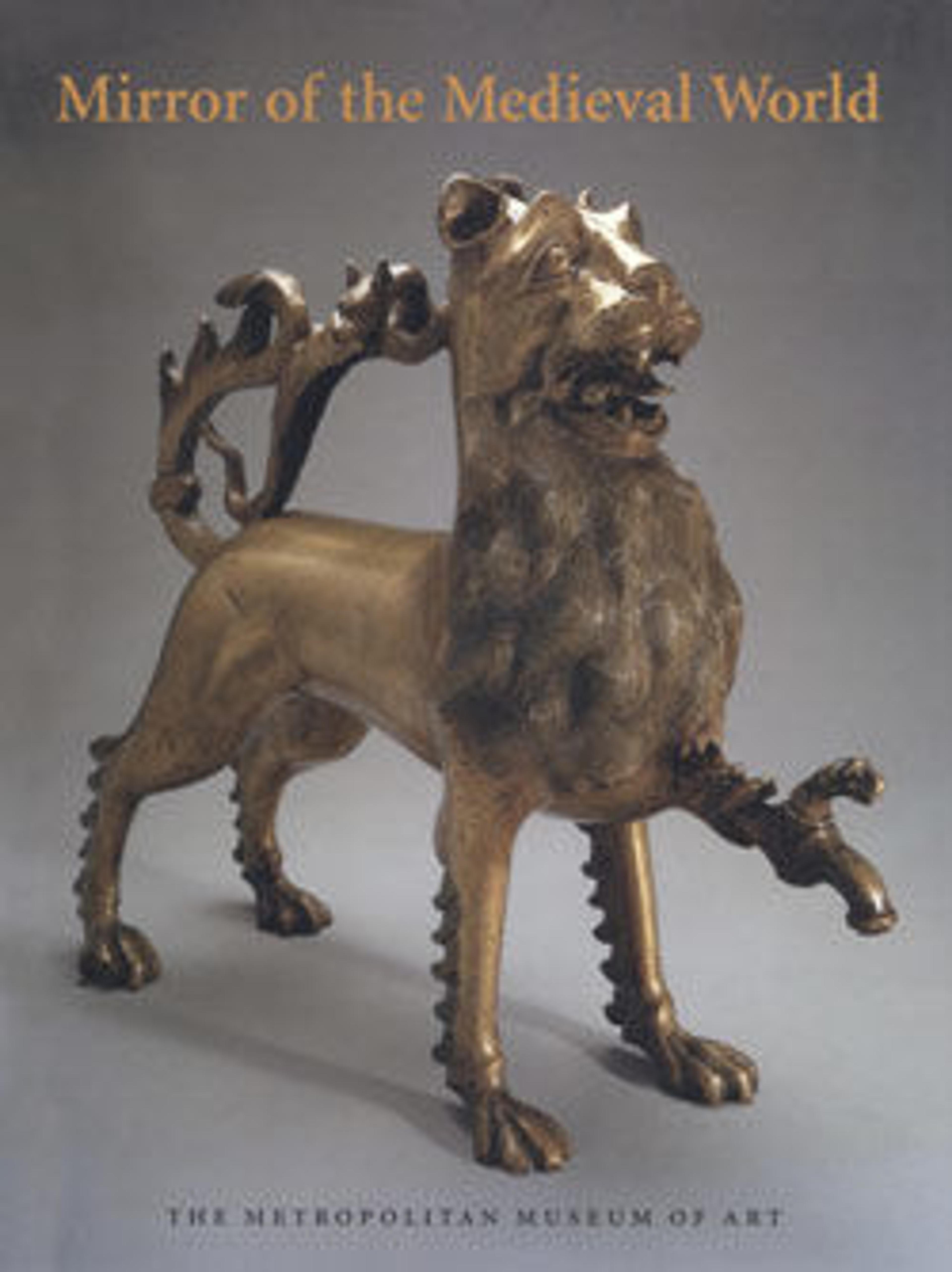Bifolium with the Decretals of Gratian
This illuminated bifolium, or double page, ranks with the finest painting produced in thirteenth-century Paris. The bifolium, which formed part of a manual of medieval canon law, the Decretals of Gratian, was compiled by a monk who taught at Bologna in the mid-twelfth century. On the sheet shown here, a gloss, or commentary, written by Bartolomeo of Brescia, frames the central, two-column text block representing the work of Gratian, which is preceded by an illustration of the chapter, or causa.
The bifolium incorporates parts of causae 16-19. The miniature signals the beginning of causa 19: "Two clerics wished to transfer to a monastery; both sought permission from their bishop. One left his church against the will of his bishop, the other after having renounced his regular canonicate." The bishop's prerogative is manifest in the miniature: Mitered and enthroned, he holds a crosier and a document with a seal, as he gestures toward two kneeling clerics, who appear to petition him with raised hands. Their facial features and their hair are rendered with a few fine pen strokes. The elegance of line, combined with an almost cartoonlike presentation of the composition, creates an easily legible narrative that is typical of Parisian Gothic manuscript illumination.
The leaf is one of two known to have been extracted before 1910 from a manuscript now in the state archives of the Czech Republic at Olomouc (ms. no. C.D. 39). Both sheets have been associated with Maître Honoré, a native of Amiens, whose name has become synonymous with the best illuminations produced in thirteenth-century Paris. There is, however, only one documented manuscript by Honoré and his workshop--a copy of Gratian's Decretals at Tours (Bibl. Mun. ma. 558), dated 1288. It is conceivable that the Metropolitan's bifolium and the Olomouc manuscript also are the work of an illuminator in Honoré's atelier; the illumination for causa 19 of the Tours Decretals has compositional and iconographic elements in common with the Metropolitan's bifolium. Since Honoré himself was only one of a number of prominent Parisian illuminators active at the time, working in close proximity to and in collaboration with one another, the generic similarities to the Tours Decretals help to confirm a date for the Museum's illumination of about 1290 but not its authorship.
The bifolium incorporates parts of causae 16-19. The miniature signals the beginning of causa 19: "Two clerics wished to transfer to a monastery; both sought permission from their bishop. One left his church against the will of his bishop, the other after having renounced his regular canonicate." The bishop's prerogative is manifest in the miniature: Mitered and enthroned, he holds a crosier and a document with a seal, as he gestures toward two kneeling clerics, who appear to petition him with raised hands. Their facial features and their hair are rendered with a few fine pen strokes. The elegance of line, combined with an almost cartoonlike presentation of the composition, creates an easily legible narrative that is typical of Parisian Gothic manuscript illumination.
The leaf is one of two known to have been extracted before 1910 from a manuscript now in the state archives of the Czech Republic at Olomouc (ms. no. C.D. 39). Both sheets have been associated with Maître Honoré, a native of Amiens, whose name has become synonymous with the best illuminations produced in thirteenth-century Paris. There is, however, only one documented manuscript by Honoré and his workshop--a copy of Gratian's Decretals at Tours (Bibl. Mun. ma. 558), dated 1288. It is conceivable that the Metropolitan's bifolium and the Olomouc manuscript also are the work of an illuminator in Honoré's atelier; the illumination for causa 19 of the Tours Decretals has compositional and iconographic elements in common with the Metropolitan's bifolium. Since Honoré himself was only one of a number of prominent Parisian illuminators active at the time, working in close proximity to and in collaboration with one another, the generic similarities to the Tours Decretals help to confirm a date for the Museum's illumination of about 1290 but not its authorship.
Artwork Details
- Title: Bifolium with the Decretals of Gratian
- Artist: Style of Master Honore (French)
- Date: ca. 1290
- Geography: Made in Paris, France
- Culture: French
- Medium: Tempera and gold on parchment, brown ink; modern leather binding
- Dimensions: Binding: 19 × 11 13/16 × 1 in. (48.2 × 30 × 2.5 cm)
Folio: 18 9/16 × 11 7/16 in. (47.2 × 29.1 cm)
Opening (approx.): 6 1/4 in. × 21 1/16 in. × 19 in. (15.9 × 53.5 × 48.2 cm) - Classification: Manuscripts and Illuminations
- Credit Line: Gift of John Feldman, 1990
- Object Number: 1990.217
- Curatorial Department: Medieval Art and The Cloisters
More Artwork
Research Resources
The Met provides unparalleled resources for research and welcomes an international community of students and scholars. The Met's Open Access API is where creators and researchers can connect to the The Met collection. Open Access data and public domain images are available for unrestricted commercial and noncommercial use without permission or fee.
To request images under copyright and other restrictions, please use this Image Request form.
Feedback
We continue to research and examine historical and cultural context for objects in The Met collection. If you have comments or questions about this object record, please contact us using the form below. The Museum looks forward to receiving your comments.
